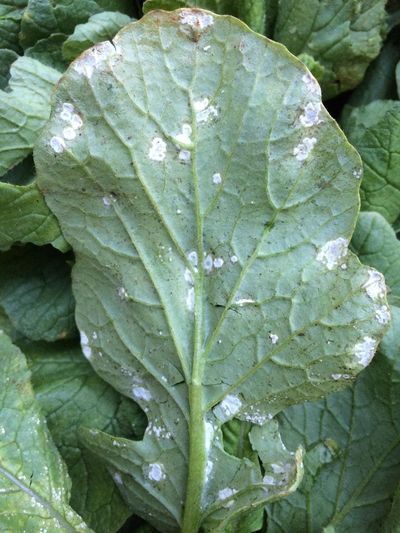What is Radish White Rust Disease?
White rust of radishes is caused by the fungus Albugo candida. The disease usually afflicts the leaves, although it may affect other parts of the plant as well. The fungus appears as white, raised spore masses on the underside of the leaves. The area affected may be barely visible to a ½ inch (1 cm.) across or larger.
How is White Rust on Radish Spread?
When mature, the epidermis of the blister-like pustule ruptures, releasing the powdery white spores that are carried on the wind or by splashing water to neighboring plants. The pustules sometimes result in deformed stems, leaves, or flowers. White rust of crucifers infects only plants in its host group. These include:
Arugula Bok choy Broccoli Brussels sprouts Cabbage Cauliflower Chinese cabbage Collards Mustard Radish Tatsoi Turnips
The disease is promoted by mild temperatures and high humidity. Dry weather or extreme heat or cold will slow the progression of the disease. The pathogen survives from year to year in the soil, on plant debris, or on overwintering infected crops and weed hosts.
Managing Radishes with White Rust
Practice crop rotation to help reduce the risk of the disease by reducing the number of spores in the area. Plowing may also help reduce the risk although it also may increase soil loss via erosion. Since Albugo candida is crop specific, rotate among some of the above listed hosts to control the disease. Remove weeds and volunteer plants. When conditions favor the disease, apply fungicides. The same fungicides that control downy mildew are effective against white rust as well.
